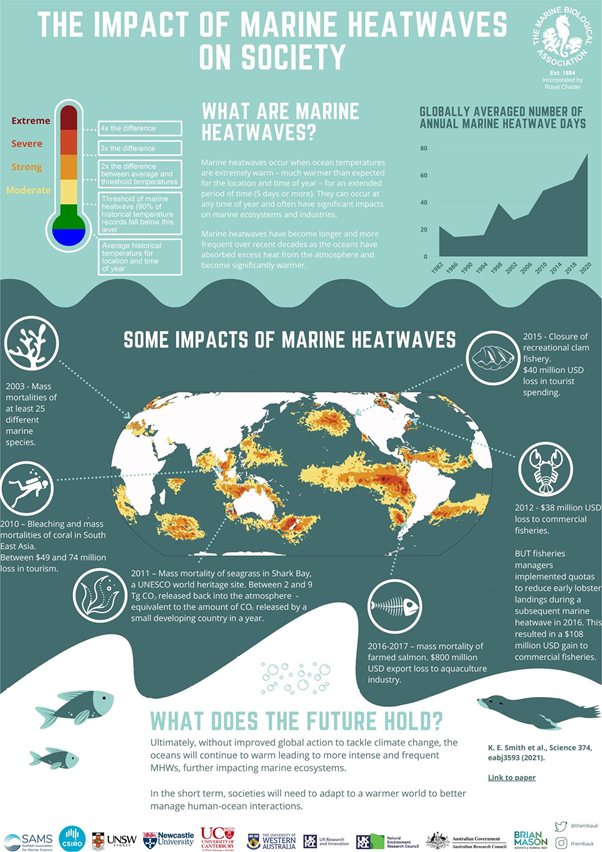

20th June 2022 (8 Topics)
Context
A new study has suggested that warm subsurface waters in the Bay of Bengal likely helped fuel the 2020 Amphan super cyclone.
About
Marine heatwaves:
- First described in 2011: The term “marine heatwave” was initially used to describe an extreme surface warming event off the west coast of Australia during 2010-11 austral summer.
- Marine heatwaves like The Blob has resulted in mass mortalities in marine mammals and birds, and collapse of fisheries and aquaculture in the US, Korea, etc.
- Marine heatwaves are periods of extremely high temperatures in the ocean (above the 90th percentile).
- These events cause marine habitat destruction due to coral bleaching, seagrass destruction, and loss of kelp forests, affecting the fisheries sector adversely.
- Impact on the Monsoon
- The marine heatwaves in the western Indian Ocean and the Bay of Bengal are found to result in dry conditions over the central Indian subcontinent.
- There is an increase in rainfall over south peninsular India in response to the heatwaves in the Bay.
What causes marine heatwaves?
- Marine heatwaves can be caused by a whole range of factors, and not all factors are important for each event.
- The most common drivers of marine heatwaves include ocean currents which can build up areas of warm water and air-sea heat flux, or warming through the ocean surface from the atmosphere.
- Winds can enhance or suppress the warming in a marine heatwave, and climate models like El Niño can change the likelihood of events occurring in certain regions.

Trends:
- Bay of Bengal recorded surface temperatures of 32-34°C, before Cyclone Amphan.
- 93% of the heat from global warming goes into the oceans.
- Warm waters are an energy source for cyclones.
- As the Arabian Sea warms, the number and intensity of cyclones and heavy rains increase.
- Over the Arabian Sea,
- 150% rise in the number of very severe cyclones
- 80% rise in the total duration of cyclones
- 20%-40% rise in the intensity of cyclones Over the Bay of Bengal, rapid intensification may be occurring more.
Key findings about Marine heatwave and Cyclone:
- The heat content in the subsurface ranged between 135 and 150 kilojoules per square centimetre before the cyclone.
- Warm subsurface waters could intensify cyclones by allowing heat to flow between the sea and atmosphere. Warmer waters fuel cyclones.
- The subsurface water may have warmed because of the high sea level anomaly, which is the difference between the total and average sea level.
- An increase in sea level is brought about by anticyclonic eddies, which is a circular movement of water.




